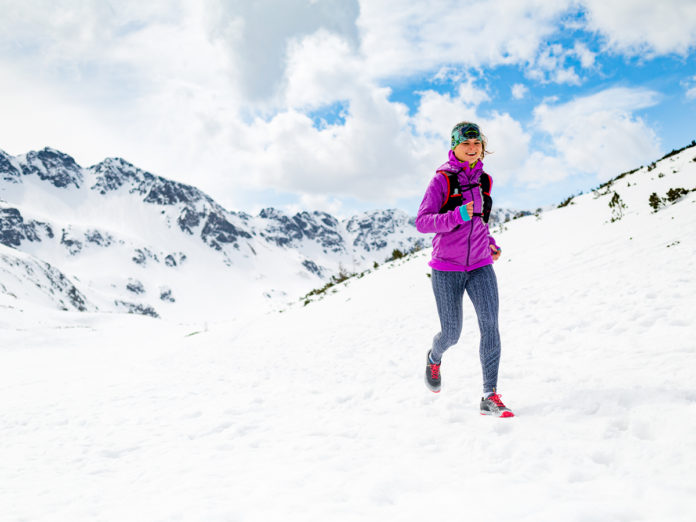
Mother Nature is not always kind to runners and in many parts of Canada, winter is fast approaching. This means snow and ice will soon cover your favorite running routes, temperatures will dip below zero, cold winds will blow in your face and days will get shorter. Whether you run before work or after, you will need to prepare for the cold, windy and dark days that lie ahead.
Winter running does not have to be a miserable experience. And if you dress properly and think positively, you can learn to love it. Getting out for a run in the winter, even when you want to stay in, will give you a huge sense of accomplishment and pride. It will force you to get outside your comfort zone and make you a stronger runner. Furthermore, it will be easier for you to handle other adversities in life. Let’s look at how you can thrive when running in the winter.
Proper layering
Without a doubt, you need to layer up to feel comfortable running in cold temperatures. However, it’s equally as important not to overdress or you could get sweaty underneath all your clothing. If that happens, your sweat can freeze as you begin removing layers, causing extreme discomfort and heat loss.
- Wear a light, long-sleeve technical, moisture-wicking shirt as your base layer, which is closest to your skin. Avoid wearing cotton as your base layer because it retains moisture if you sweat, which can be pretty uncomfortable.
- Your mid-layer, which goes on top of your base layer and plays a vital role in keeping you warm, should be a comfortable fleece jacket.
- The top layer should be light, breathable, windproof and waterproof. Ideally, it has zippers that allow you to vent heat.
- Fleece-lined tights that don’t restrict movement are ideal for your winter run.
- Cover your head and ears because you can lose a lot of heat if you don’t. Wear a moisture-wicking headband if it’s not too cold or a running toque in harsher temperatures. You may also need to wear a breathable, moisture-wicking neck buff.
- Consider investing in high-quality running gloves to help prevent frostbite on the fingers.
- Wear moisture-wicking merino wool socks to keep your feet from getting cold and wet.
- If it’s icy, consider traction aids – spikes that attach to your shoes and help prevent falls during icy conditions.
Safety considerations
Don’t blend in. When running outside, it’s important to make sure motorists can see you, particularly during the dark, winter months. Bright, reflective clothing, as well as lights will make you stand out and fluorescent yellow or bright red are great colours for your top layer.
Go slow. You may need to run slower to avoid slipping on ice. If it’s very icy and you have to do speedwork, it is best to do that indoors on the treadmill and do your easy runs outside.
Be vigilant and always assume drivers can’t see you. If it’s slippery, a motorist may not be able to stop quickly enough to avoid you.
Additional running tips
Warming up is important for injury prevention. During your warm-up, start slow and perform some ankle rotations, leg swings, as well as arm, head and trunk rotations.
When you finish your run, change into warm, dry clothing as soon as possible.
The coronavirus pandemic has created other unique challenges for runners. Therefore, it is important to maintain at least a six-foot distance from other runners and wear a moisture-wicking face covering if you are in crowded areas. Keep your running group small.
With a few small changes to your wardrobe and routine, you will learn to embrace winter running and emerge as a much stronger runner when racing returns.
 IMPACT Magazine’s November Edition
IMPACT Magazine’s November Edition
RBC Olympic hopefuls Hayley Daniels, Sam Effah and Kate Wright as our inspiring cover athlete stories! Get prepared for winter running, making movement part of your workday, and exploring great hikes near Calgary and Vancouver.














